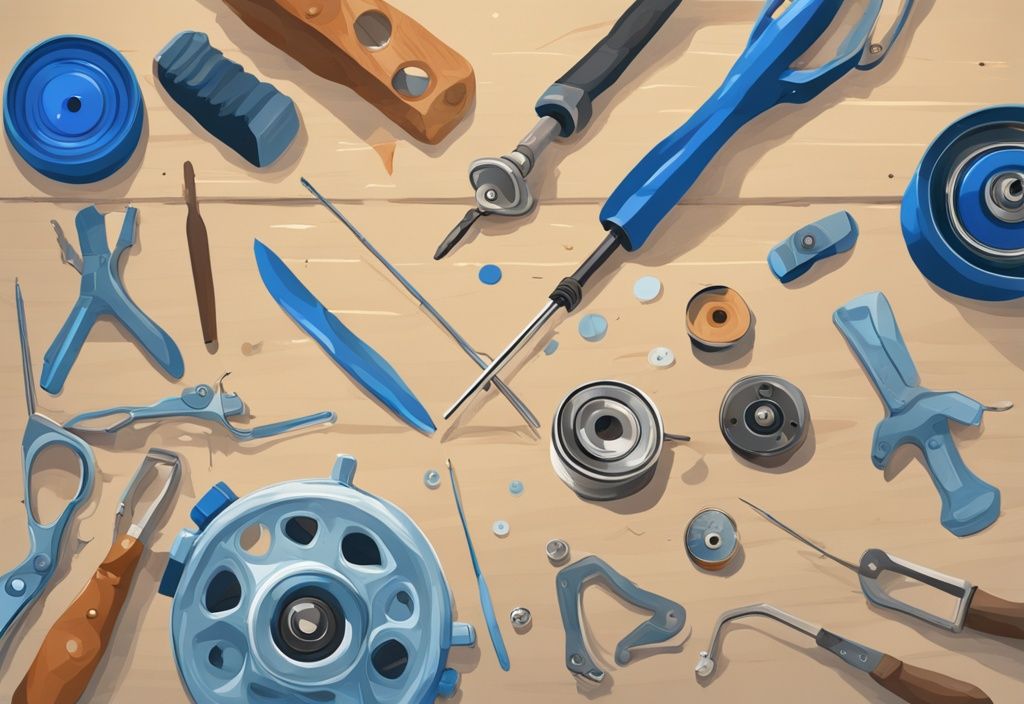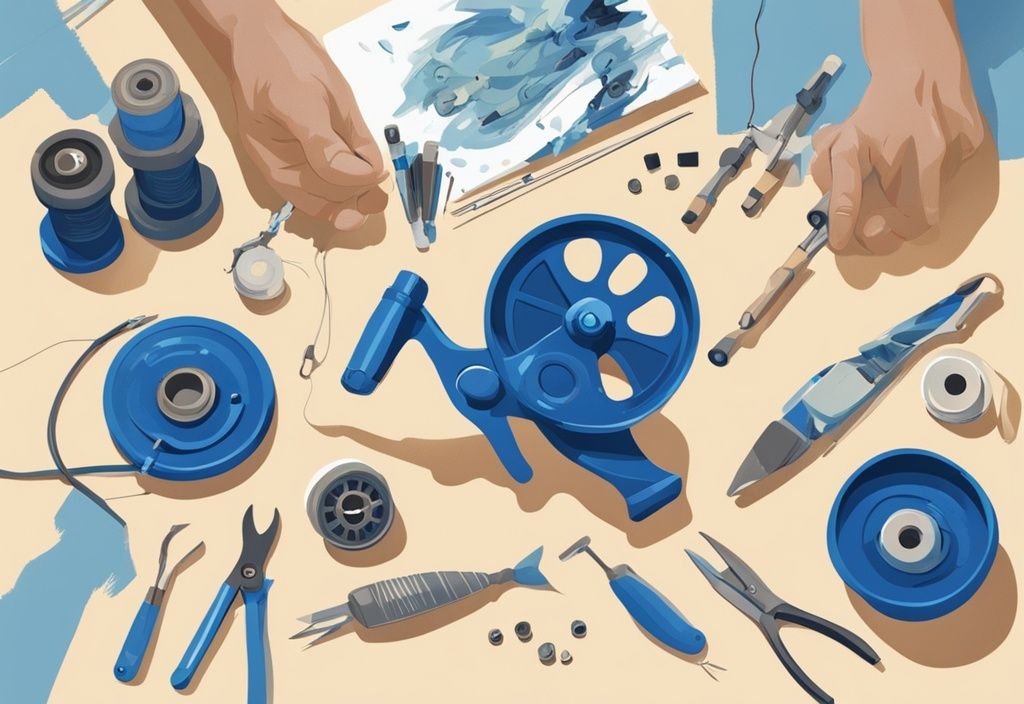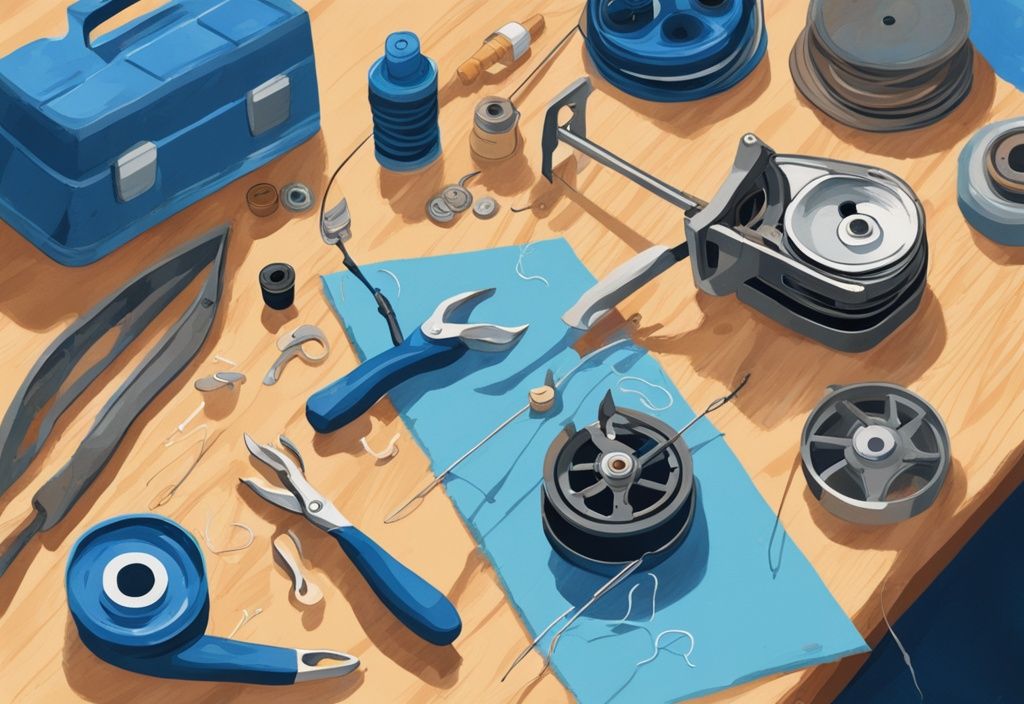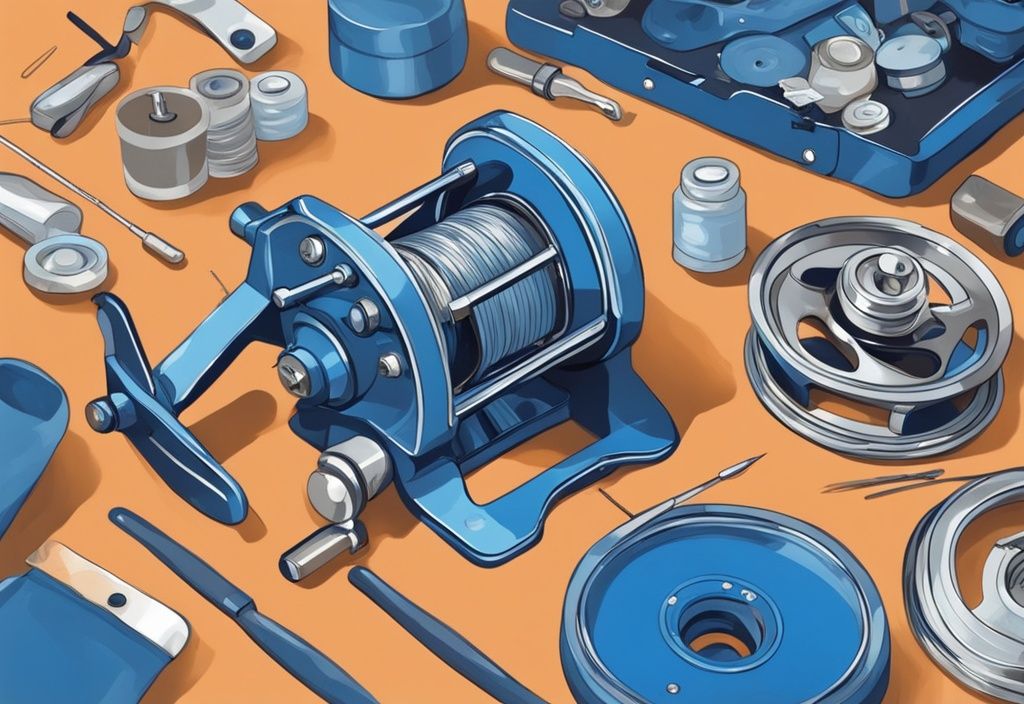Ah, the joy of casting your line under a clear blue sky, feeling the gentle breeze as you wait for that telltale tug. But what happens when your trusty reel decides to take a break? Frustration sets in, right? Fear not, fellow angler. I’ve been there, and I’m here to share some tried-and-true solutions. Whether you’re a seasoned pro or just dipping your toes into the fishing world, fixing that reel is simpler than you think. Let’s roll up our sleeves and get you back to the water, where the real adventure awaits.
Step-by-Step Guide to Fix a Fishing Reel That Won’t Reel In
Ever been out on the water, sun warming your back, only to find your fishing reel stubbornly refusing to reel in? It’s a common hiccup, but don’t let it ruin your day. Let’s dive into some hands-on steps to get your reel back in action.
Ensure Proper Tension on the Line
Ah, the dance of tension! It’s a delicate balance, really. Without the right tension, your line can become as unruly as a two-year-old at naptime. Try lifting your rod tip, especially with lighter lures. Feel that sweet spot where the line sings in harmony with your reel. It’s like music to an angler’s ears!
Adjust the Amount of Line on the Spool
Ever notice how an overstuffed spool can be as troublesome as an overstuffed suitcase? Too much line leads to tangles and chaos. Take a moment to check your spool. Trim it down if it’s overflowing. Trust me, your future self will thank you when the reel runs smooth as butter.
Inspect the Line Pickup Mechanism
The line pickup mechanism is the unsung hero of your reel. If it’s not working right, you’re in for a rough ride. Make sure it’s there and doing its job. If there’s a blockage, clear it out. It’s like giving your reel a breath of fresh air, ensuring every cast is a joy.
Remove and Check the Reel’s Front Cover
Pop off that front cover and take a peek inside. It’s like opening a treasure chest, revealing secrets that affect your reeling. Guide the line with your fingers and see how it behaves. You might find twists or misplacements that need fixing. Once sorted, you’ll notice a world of difference in performance.
Try Different Types of Fishing Line
Fishing lines are like shoes—different ones suit different occasions. Ever tried fluorocarbon? It might just be the Cinderella fit for your reel. Experiment a bit. Find the line that dances perfectly with your reel and the waters you’re fishing in. It’s all about finding that perfect match for your fishing style.

Identifying the Problem with Your Fishing Reel
When your fishing reel decides it’s on a break and won’t reel in, it’s time to play detective. Let’s dive into the common culprits that might be causing the hiccup and get you back to enjoying those serene moments by the water.
Inspect the Fishing Line
Ah, the fishing line—the unsung hero of our angling adventures. Sometimes, it gets a little tangled up, and that’s when the trouble starts. Picture this: you’re about to reel in the catch of the day, but the line’s throwing a tantrum. Start by giving it a good look-over. Are there any tangles or twists? If so, you might need to take the spool off and untangle it. It’s a bit like unraveling a mystery, isn’t it? Also, check for any signs of wear and tear. A damaged line is like a weak link in a chain—it’s bound to snap at the worst time. If it looks worse for wear, swap it out. And remember, spooling it correctly can save you from future headaches.
Check the Reel Handle
The reel handle is your trusty sidekick, but even sidekicks need some TLC. Give it a once-over for any looseness or damage. A wobbly handle can throw off your whole game, so tighten it up if needed. It’s like tuning a guitar—everything needs to be just right. If the handle’s beyond saving, don’t hesitate to replace it. A sturdy handle means smooth sailing, or in this case, smooth reeling.
Examine the Gear System
Now, let’s talk gears—the heart of your reel’s operation. These little guys work hard, and sometimes they show it. Check for any wear or misalignment. If the gears aren’t meshing well, your reeling will feel like a bumpy ride. Make sure they’re aligned and working smoothly. If any gears look like they’ve seen better days, consider replacing them. A well-oiled gear system is your ticket to a seamless fishing experience.
Step-by-Step Guide to Fix a Fishing Reel That Won’t Reel In
Ever found yourself on a serene lake, only to discover your fishing reel refuses to cooperate? Let’s dive into some practical steps to get that reel spinning again, so you can focus on the thrill of the catch.
Ensure Proper Tension on the Line
Ah, the delicate dance of line tension. Picture this: you’re out on the water, the sun warming your back, and you’re reeling in with a gentle rhythm. But wait! The line’s not cooperating. Adjusting your technique can make all the difference. Try raising the rod tip, especially with lighter lures. This little tweak can create the perfect tension, allowing the line to glide smoothly onto the spool. Feel the difference?
Adjust the Amount of Line on the Spool
Ever notice how an overstuffed suitcase just won’t close? The same goes for your spool. Too much line can jam things up. Take a moment to inspect your spool. If it’s overflowing, trim it down a bit. This simple adjustment can prevent tangles and keep your reel working like a charm. It’s all about balance, my friend.
Inspect the Line Pickup Mechanism
Think of the line pickup mechanism as the heart of your reel. If it’s not in tip-top shape, your reel won’t perform its best. Some reels might not even have this feature, so it’s worth checking. Make sure nothing’s blocking its path and that it’s functioning smoothly. A quick inspection can save you a lot of hassle down the line.

Remove and Check the Reel’s Front Cover
Sometimes, you need to get hands-on. By removing the front cover, you can guide the line manually and see where things might be going awry. Look for twists or misalignments. Adjusting these can be the key to smooth reeling. It’s like giving your reel a little tune-up.
Try Different Types of Fishing Line
When all else fails, it might be time to switch things up. Different lines have different personalities. Maybe fluorocarbon or another type could be the perfect match for your reel and conditions. Experimenting with lines can open up new possibilities and might just solve your reeling woes. Who knows, you might discover a new favorite!
Clean and Lubricate the Reel
When your fishing reel stubbornly refuses to reel in, it’s time for a little TLC. This process involves two key steps: cleaning and lubricating. Both are essential to get your reel back in action and keep it performing smoothly.
Cleaning the Reel
Imagine you’re out on the water, the sun warming your shoulders, and suddenly your reel jams. Frustrating, right? A thorough cleaning can often solve this. Grab a soft cloth and some mild detergent. Gently wipe away the dirt and grime that inevitably sneaks into every nook and cranny of your reel. Pay attention to those hard-to-reach spots; they’re often the culprits behind a sticky reel. Once you’ve rid the reel of debris, make sure every part is completely dry before you put it back together. Moisture can lead to rust, and that’s one fishing companion you don’t want.
Lubricating the Reel
Now, let’s talk about lubrication. Picture the gears of your reel moving like a well-oiled machine. That’s the goal. Use a lubricant specifically made for fishing reels, and apply it to the gears and any moving parts. This step reduces friction, which can wear down your reel over time. Regular lubrication isn’t just a fix; it’s a way to prevent future mechanical hiccups. A well-lubricated reel means smoother casts and retrieves, making your fishing trips more enjoyable. After all, isn’t that what it’s all about?
Replace Damaged Parts
Ever find yourself on a serene morning, casting your line only to discover your fishing reel won’t reel in? It’s a frustrating hiccup, but fear not—I’ve been there, and there’s a straightforward fix. Start by giving your reel a good once-over. Look closely at the gears, spool, and handle. These parts often bear the brunt of your fishing escapades, and they might be the culprits behind your reel’s stubbornness.
Once you’ve zeroed in on the worn or broken parts, it’s time to hunt down replacements. Make sure you get them from a trusted supplier. After all, you want parts that fit like a glove and stand the test of time.
With new parts in hand, roll up your sleeves and dive into the replacement process. Follow the manufacturer’s instructions or grab a detailed guide. Pay attention to the alignment and fit—think of it like piecing together a puzzle. A misaligned part can throw your reel off balance and cause more headaches down the line.

After you’ve swapped out the old for the new, it’s time for the moment of truth. Test your reel with a few practice casts. Feel the smoothness, the efficiency—it’s like music to an angler’s ears. This step ensures everything’s working in harmony, just as it should.
Remember, regular maintenance and timely part replacements can breathe new life into your fishing reel. Keep it in top shape, and it’ll be your trusty companion on countless fishing adventures.
When to Consult a Professional or Consider Replacement
Ever found yourself wrestling with a fishing reel that just won’t reel in? Despite your best efforts and following every tip on how to fix a fishing reel that won’t reel in, sometimes it’s best to call in the cavalry. Persistent issues often hint at deeper mechanical woes that only a seasoned pro can uncover. These experts have a knack for spotting hidden problems, ensuring your gear is shipshape and saving you from more headaches down the line.
But let’s face it, sometimes the reel just isn’t the right dance partner for your fishing style or the waters you frequent. If you’ve tried every trick in the book and your reel still acts up, it might be time to consider a new one. A reel that’s perfectly matched to your needs can transform your fishing trips, making every cast a joy rather than a chore. Investing in gear that complements your techniques and typical conditions can truly elevate your experience.
Now, I’m all for regular maintenance and a good scrub-down to keep your reel in top form. But there are times when even the most diligent DIYer needs to wave the white flag. Complex issues like tangled lines or gear system failures often need specialized tools and know-how. Bringing in a professional ensures your reel is ready for action, so you can focus on feeling that thrilling tug on the line. Remember, while DIY fixes are great, knowing when to call in the experts can save you time and keep your gear in the game for the long haul.
FAQ
When your fishing reel refuses to reel in, it can be as frustrating as a tangled line on a perfect morning. Here, we tackle some common questions that might just get you back to casting smoothly.
What should I do if my reel is still not working after trying these steps?
If your reel is still giving you the cold shoulder, it might be time to call in the pros. Sometimes, a reel needs a detailed inspection that only a professional can provide. Double-check that you’ve followed every step—did you miss a tiny screw or overlook a sneaky bit of grit? It’s easy to do when you’re eager to get back to the water.
Can using a different type of fishing line really make a difference?
Oh, you bet it can! The type of line you use can be a game-changer. Some lines just gel better with certain reels, making everything run smoother. It’s like finding the right dance partner—when it clicks, it just works. Plus, different lines can handle specific conditions better, giving you an edge when you’re out there battling the elements.


